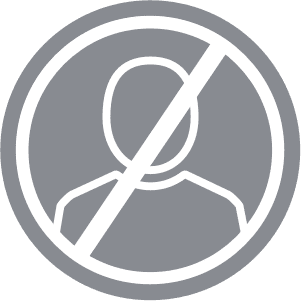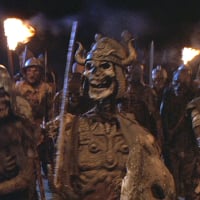Targeting Call...

Amazing hit, but not targeting.
espn.com/video/clip?id=21464048
https://sbnation.com/college-football/2016/9/7/12829482/targeting-penalty-rulebook-ncaa-football
"No player shall target and make forcible contact against an opponent with the crown (top) of his helmet. This foul requires that there be at least one indicator of targeting (See Note 1 below). When in question, it is a foul.
This specifies a hit with the top of the helmet, but not necessarily a hit to the opponent’s helmet.
The next item in the rulebook, including the aforementioned "Note 1," which explains the many additional situations in which all kinds of hits are considered targeting:
No player shall target and make forcible contact to the head or neck area of a defenseless opponent (See Note 2 below) with the helmet, forearm, hand, fist, elbow or shoulder. This foul requires that there be at least one indicator of targeting (See Note 1 below). When in question, it is a foul (Rules 2-27-14 and 9-6). (A.R. 9-1-4-I-VI)
Note 1: "Targeting" means that a player takes aim at an opponent for purposes of attacking with forcible contact that goes beyond making a legal tackle or a legal block or playing the ball. Some indicators of targeting include but are not limited to:
- Launch—a player leaving his feet to attack an opponent by an upward and forward thrust of the body to make forcible contact in the head or neck area
- A crouch followed by an upward and forward thrust to attack with forcible contact at the head or neck area, even though one or both feet are still on the ground
- Leading with helmet, shoulder, forearm, fist, hand or elbow to attack with forcible contact at the head or neck area
- Lowering the head before attacking by initiating forcible contact with the crown of the helmet"
Comments
-
-
He did this.DoogieMcDoogerson said:
- Lowering the head before attacking by initiating forcible contact with the crown of the helmet"
It is designed to protect defensive players from paralyzing themselves.
Call it the Curtis Williams rule. -
I wish the crown of his helmet had made contact with Gilmore's fucking face.
-
Speaking of the broadcast team, they keep Quint on a short leash.dflea said:I wish the crown of his helmet had made contact with Gilmore's fucking face.
The two in the booth we're worse than ever though. -
FML
*kept
*were -
A lot of these calls ae bizarre and don't make sense, but as I understand it, that's targeting.
-
POTDdflea said:I wish the crown of his helmet had made contact with Gilmore's fucking face.
-
Looked pretty targety to me
-
First off, I'm not going to read all that.DoogieMcDoogerson said:I think it was the wrong call...Feet were still on ground as he made contact, he did not go to head or neck area and he did not lower his head.
Amazing hit, but not targeting.
espn.com/video/clip?id=21464048
https://sbnation.com/college-football/2016/9/7/12829482/targeting-penalty-rulebook-ncaa-football
"No player shall target and make forcible contact against an opponent with the crown (top) of his helmet. This foul requires that there be at least one indicator of targeting (See Note 1 below). When in question, it is a foul.
This specifies a hit with the top of the helmet, but not necessarily a hit to the opponent’s helmet.
The next item in the rulebook, including the aforementioned "Note 1," which explains the many additional situations in which all kinds of hits are considered targeting:
No player shall target and make forcible contact to the head or neck area of a defenseless opponent (See Note 2 below) with the helmet, forearm, hand, fist, elbow or shoulder. This foul requires that there be at least one indicator of targeting (See Note 1 below). When in question, it is a foul (Rules 2-27-14 and 9-6). (A.R. 9-1-4-I-VI)
Note 1: "Targeting" means that a player takes aim at an opponent for purposes of attacking with forcible contact that goes beyond making a legal tackle or a legal block or playing the ball. Some indicators of targeting include but are not limited to:
- Launch—a player leaving his feet to attack an opponent by an upward and forward thrust of the body to make forcible contact in the head or neck area
- A crouch followed by an upward and forward thrust to attack with forcible contact at the head or neck area, even though one or both feet are still on the ground
- Leading with helmet, shoulder, forearm, fist, hand or elbow to attack with forcible contact at the head or neck area
- Lowering the head before attacking by initiating forcible contact with the crown of the helmet"
Second, while IRDGAF, but he absolutely did lower his head and used the crown of his helmet in the guy's chest doogersonmcdoog. again, IRDGAF about either kid, but the rule's there to protect both players. it's a dangerous way to tackle ... ok, bring it.
PS: Chuck Cecil at Arizona (and the NFL) used to hit like that on every tackle. The guy was and is a crazy motherfucker, but also a lucky one. The guy's picture should be in the dictionary next "targeting". -
pretty much exactly right. watch the Curtis clip sometime. almost the same play, except the Stanford back was bigger and, as I recall, lowered his head too. In any event, it's how Williams became paralyzed.TierbsHsotBoobs said:
He did this.DoogieMcDoogerson said:
- Lowering the head before attacking by initiating forcible contact with the crown of the helmet"
It is designed to protect defensive players from paralyzing themselves.
Call it the Curtis Williams rule.






